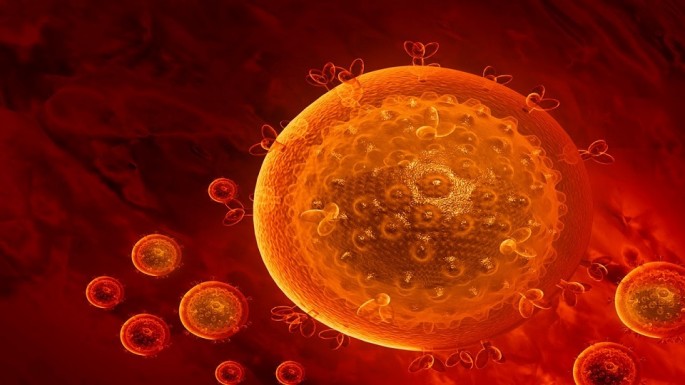Medical researchers have learned in a new study that the progression of HIV to AIDS results from the human immune cells, rather than the microbe itself. A cellular chain reaction and mass suicide occur when healthy cells are unable to destroy the viral infection. This new understanding of how the infectious diseases work will help in the development of new treatments for the prevention of HIV to AIDS advancement.
The study about human immunodeficiency virus (HIV) and acquired immunodeficiency syndrome (AIDS) was published in Cell Reports.
Nicole Galloway, PhD was the co-lead author of the study. She noted that free-floating viruses cause the initial infection. However, it is the following cell-to-cell development of HIV that causes the massive dying of CD4 T cells.
In fact, the cell-to-cell transmission method is 100 to 1000 times more efficient in the HIV virus' attack on hosts, according to Business Standard. However, it also activates a devastating cellular chain reaction.
Researchers learned that 95 percent of cell death caused by HIV resulted in cellular suicide after they failed to destroy the infection. Healthy cells are actually able to abort the virus as it tries to invade them.
However, DNA remains after the cells eject the HIV. Enzymes in the DNA activate the caspase-1 enzymes, causing the cells to commit suicide in the process called pyroptosis.
The researchers evaluated several methods of HIV switch. They included genetic modification of the microorganisms, chemical HIV inhibitors, and increasing the distance between cells, according to The Suffield Times. Such methods helped to prevent cell inflammation and suicide.
Dr. Warner C. Greene is the director of the Gladstone Institute of Virology and Immunology. He noted that the new research is a game-changer in understanding how HIV causes mass cell death. It spotlights the infected cells in lymphoid (white blood cell) tissues rather than in the free virus.
He explained that one goal of HIV-AIDS research will be developing methods that prevent cell-to-cell transmission. That could block the "death pathway" and halt the advancement of HIV to AIDS.
Over 1.2 million people in the United States are living with HIV. Nearly one-eighth are unaware they have the disease.



























